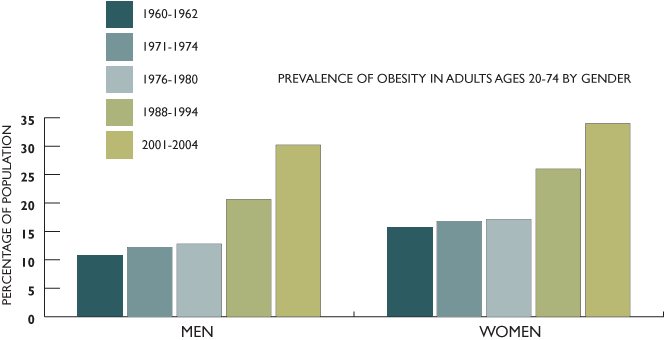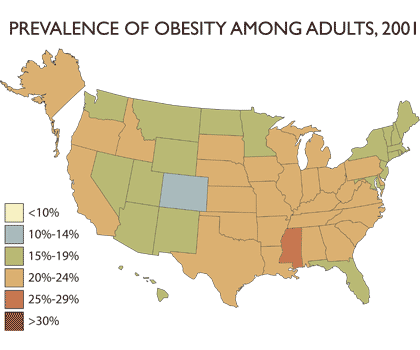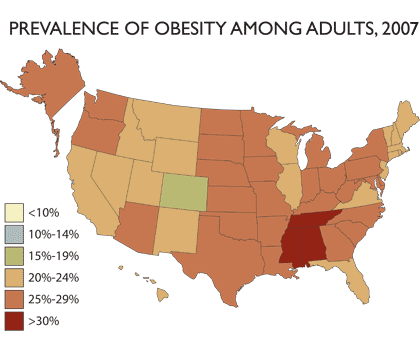
Did You Know? Certainy statistical calculations suggest that, given current trends over the past 30 years, the entire US population could be obese by the year 2230 if these trends persist.1 1. Foreyt JP. Goodrick GK. The ultimate triumph of obesity. Lancet. 1995;346:134-135 |
Obesity as an Epidemic Lately, we have all likely heard the prevalence of obesity in America, and even globally, as reaching “epidemic” proportions. One may question how obesity could be considered an epidemic. Many of us would think of an epidemic as referring to a widespread health issue caused by the introduction of a disease or microorganism into a species. In fact, the similarities between the negative health impact a microorganism may have on a person is very similar to the negative impacts that external factors produced by our own society and environment can have on us. Our nation’s propensity toward obesity and obesity-related health issues mirror an epidemic very closely. Loosely, an epidemic is defined as a widespread outbreak of a disease or anything resembling a disease, attacking or affecting many individuals in a community or population simultaneously. A disease is any disturbance or anomaly in the normal functioning of the body that probably has a specific cause and identifiable symptoms. Diseases are one of the factors threatening us from having a properly functional life. Today, more and more medical professionals recognize obesity as a chronic disorder that inflicts the same consequences on the human body as any disease caused by a microorganism. Consequently, in 2004, the American Academy of Family Physicians adopted a policy declaring obesity a ‘disease. Importantly, on a global scale, the World Health Organization has done likewise.
|
Food and lack of physical activity most often play a critical role in obesity, but even an individual’s relationship to these factors is deeply rooted in environment. We lead busy, competitive lifestyles, and it is more convenient for us to feed on fast food and ready-made, processed foods (usually high in salts, simple sugars, carbohydrates and cost-effective, low-quality ingredients). We frequently suffer form a lack of free time as our careers become more competitive, commutes become necessary, or longer, sedentary working hours become the norm in order to ensure financial stability. Technological advances often make life more convenient and allow us to save time, but they can also contribute to a sedentary lifestyle. How long has it been, for instance, since any of us have even had to get up to change the channel on our television sets? We live in the most advanced, wealthiest, most envied country on the planet, but some of those advancements and conveniences are the same things that contribute most to our poor health. Theses external influences all can lead to lack of exercise and poor eating habits, depression and stress. Affluence is the predominant American lifestyle, but the physical price of success is beginning to show in our nation’s overall health.
|
||
 |
||||
|
||||
Epidemic Proportions Currently, more than 64% of US adults are either overweight or obese, according to the results from a 1999-2000 National Health and Nutrition Examination Survey (NHANES). The greatest increase took place in the obese group (those with a Body Mass Index of 40 or greater). Roughly 59 million Americans are in this group, which is at the greatest health risk (see Co-Morbid Diseases in this website). |
According to the 2009 Statistical Fact Update from the American Heart Association, based on data from National Health and Nutrition Examination Survey (NHANES): Among children aged 2-19:
Among Americans age 20 and over:
When one takes into consideration the many health risks that are related to, or precipitated from, excess weight and obesity, it is easy to see how our nation's expanding waistlines are creating an epidemic. |
|||
  |
||||

